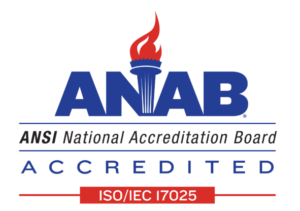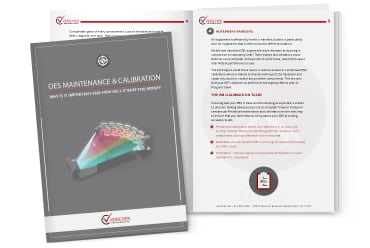
Sorting scrap metal is essential for recycling and maximizing profits. Efficient scrap metal sorting can help businesses enhance their returns by properly separating valuable metals. This guide will explain how to sort scrap metal properly by detailing the various methods and techniques used in scrap metal sorting, the necessary equipment and strategies to increase profit from sorted scrap metal.
Understanding Scrap Metal Types
Before diving into sorting techniques, it’s crucial to understand the different types of scrap metal. Scrap metal can be broadly categorized into ferrous and non-ferrous metals. Ferrous metals contain iron and are magnetic, while non-ferrous metals do not contain iron and are non-magnetic.
Common Scrap Metal Types:
- Aluminum: Lightweight and non-magnetic, commonly found in cans, window frames, and automotive parts.
- Copper: Highly conductive and valuable, often found in electrical wiring, plumbing pipes, and electronics.
- Steel: A ferrous metal, commonly found in construction materials and household appliances.
- Brass: An alloy of copper and zinc, used in fittings and fixtures.
- Lead: Heavy and soft, used in batteries and radiation shielding.
How to Sort Scrap Metal: The Basics
The initial steps in sorting scrap metal involve simple techniques that can quickly separate different types of metals.
Basic Sorting Steps:
- Visual Inspection: Look for obvious differences in color, weight, and markings.
- Magnet Test: Use a magnet to distinguish between ferrous (magnetic) and non-ferrous (non-magnetic) metals. Ferrous metals like iron and steel will stick to the magnet.
- Separate Metals by Type: Sort metals into separate containers or piles based on their type and properties.
Advanced Scrap Metal Sorting Techniques
For more precise and efficient sorting, advanced techniques and technologies are employed.
Spectrometry
Spectrometry involves analyzing the light spectrum emitted by a metal sample to determine its composition. This technique provides accurate identification of metal types and their grades.
X-Ray Fluorescence (XRF)
XRF technology uses X-rays to excite atoms in a metal sample, causing them to emit fluorescent light. The emitted light is then analyzed to identify the metal and its composition.
Laser-Induced Breakdown Spectroscopy (LIBS)
LIBS technology uses laser pulses to create a plasma on the metal surface. The light emitted from the plasma is analyzed to identify the metal type and grade. The mPulse LIBS analyzer, for example, allows rapid and precise sorting based on grade identification, though it requires sufficient material setup to leverage its speed.
Tips for Sorting Specific Metals
How to Sort Aluminum Scrap
- Visual Identification: Aluminum is lightweight and often has a silvery appearance.
- Magnet Test: Aluminum is non-magnetic.
- Check for Contaminants: Remove any attached plastic or other materials.
How to Sort Copper Scrap
- Visual Identification: Copper has a reddish-brown color.
- Magnet Test: Copper is non-magnetic.
- Clean the Scrap: Ensure copper is free from insulation or other contaminants.
Scrap Metal Sorting Equipment Essentials
To sort scrap metal effectively, certain tools and equipment are essential.
Basic Tools:
- Magnets: For distinguishing ferrous from non-ferrous metals.
- Sorting Bins: For organizing different types of metals.
- Personal Protective Equipment (PPE): Safety gear like gloves and goggles.
Advanced Equipment for Metal Sorting
The purpose of sorting scrap metal is to increase profits by separating metal grades. Operators who effectively separate grades of scrap possess a competitive advantage in the market. How does an operator rapidly yet effectively sort scrap metal? With the mPulse LIBS analyzer. The mPulse and its laser technology allow operators to rapidly identify metal grades and sort the scrap based on grade identification. The biggest drawback to the mPulse is getting enough material setup to take advantage of its speed.
Maximizing Profit from Sorted Scrap Metal
Properly sorted scrap metal can fetch higher prices, so understanding how to maximize profit is crucial. To achieve this, you should monitor market prices regularly to stay updated with current scrap metal prices and sell at the right time. Choosing the right recycling center is also important; select one that offers competitive rates for your sorted scrap. Additionally, ensuring that your scrap metal is clean and well-sorted can significantly increase its value.
Common Mistakes to Avoid When Sorting Scrap Metal
Avoid these common pitfalls to ensure efficient scrap metal sorting:
- Mixing Metal Types: Always keep different metals separated.
- Overlooking Small Valuable Pieces: Even small amounts of valuable metals like copper can add up.
- Neglecting Safety: Always wear appropriate PPE to avoid injuries.
FAQs about Sorting Scrap Metal
What is the most valuable metal to recycle?
Copper is one of the most valuable metals to recycle due to its high demand in electrical and construction industries.
What can be done with scrap metal that has been collected?
Collected scrap metal can be sold to recycling centers, used in manufacturing new products, or repurposed for various applications.
Wrapping Up: How to Sort Scrap Metal for Maximum Profit
Sorting scrap metal involves understanding the types of metals, using basic and advanced sorting techniques and utilizing the right equipment. By following these steps and avoiding common mistakes, you can maximize your profits from sorted scrap metal.
For more expert tips on scrap metal sorting, visit our Scrap Metal Tips & Tricks page.

